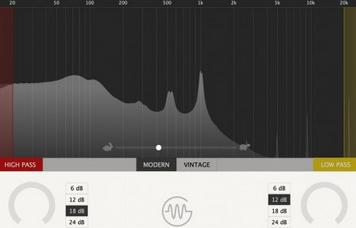Gowans Audio GowansFilters v1.21 WiN
Soft / VST Plugins
19-07-2023

Modern multi-mode high & low pass filters + a Vintage re-creation of an iconic 80's console's filters.
The brain child of Engineer / Producer Angus Woodhead and Software Designer / Engineer Nathan Isherwood both from Queensland, Australia.
Pro Engineers know that the secret to a good mix is cleaning up the lows and highs using high and low pass filters, removing sub rumble / hum / noise and high end hiss etc
Essentially we ‘capture’ the sound / saturation / colour / tone of high end vintage and modern analog hardware, and insert that into practical everyday use plug-ins.
Filters in Vintage mode has a capture from a famous 80’s large format mixing console inserted.
Vintage mode also has the same slope and frequencies as this famous desk nick named the AC/DC console installed in a local studio.
Modern mode has more slope options and a greater frequency range, and is also a brilliant creative tool for automated cutoff sweeps etc.
We try to achieve mastering quality results and phase coherence to our DSP, and have no expiry on the demo - however settings are not saved when you close your DAW.
home page:
https://goo.su/M420P
The brain child of Engineer / Producer Angus Woodhead and Software Designer / Engineer Nathan Isherwood both from Queensland, Australia.
Pro Engineers know that the secret to a good mix is cleaning up the lows and highs using high and low pass filters, removing sub rumble / hum / noise and high end hiss etc
Essentially we ‘capture’ the sound / saturation / colour / tone of high end vintage and modern analog hardware, and insert that into practical everyday use plug-ins.
Filters in Vintage mode has a capture from a famous 80’s large format mixing console inserted.
Vintage mode also has the same slope and frequencies as this famous desk nick named the AC/DC console installed in a local studio.
Modern mode has more slope options and a greater frequency range, and is also a brilliant creative tool for automated cutoff sweeps etc.
We try to achieve mastering quality results and phase coherence to our DSP, and have no expiry on the demo - however settings are not saved when you close your DAW.
home page:
https://goo.su/M420P
Related articles
VST Effects / VST Plugins
30-03-2022
Although named as such, the TSM 2040z Sub LowPass Filter is not a typical Low Pass Filter. Such filters stem from the era of the earliest polyphonic synthesizers. They were designed in parallell to the filters of the monophonic synthesizers, and in the first stages of development produced bass enhancements at high resonance frequencies. However, they lacked gain compensation.
Returning to the beginings of filters, inspired us to create a Sub LP filter.
VST Plugins / Audio Soft
9-09-2021
The God Mode introduces a new push-pull technology giving you full control over what frequencies to saturate and distort. It's node EQ graph and linear phase filters allow for unlimited options to shape the coloration of your sound.
The push-pull technology is inspired by the legendary analog Pultec EQ, a passive tube eq from the 50s, widely used in the 70s/80s for both broadcasting and mixing. The Pultec EQ would 'push' the gain for a certain frequency range into its tube circuit, and would then 'pull' it back again, to smooth out the frequency response. This creates a sound close to the original but with a nice warmth added to the boosted frequency ranges. The God Mode introduces a modern version of this technique.
Soft / Video Lessons
2-07-2021
Do you need to understand the theory, practical applications, and creative applications of multimode filters? In this course, producer and instructor Evan Sutton shows you how to use multimode filters for several types of sound design and musical projects. Evan begins with an explanation of basic low-pass and high-pass filter theory. Then he explains mixing with high-pass filters and low-pass filters. He goes into mid/side filtering, band-pass filters, and hybrid filters. Then he concludes with ways you can use filters as FX.
VST Instruments / VST Plugins
23-04-2021
The God Mode introduces a new push-pull technology giving you full control over what frequencies to saturate and distort. It's node EQ graph and linear phase filters allow for unlimited options to shape the coloration of your sound.
The push-pull technology is inspired by the legendary analog Pultec EQ, a passive tube eq from the 50s, widely used in the 70s/80s for both broadcasting and mixing. The Pultec EQ would 'push' the gain for a certain frequency range into its tube circuit, and would then 'pull' it back again, to smooth out the frequency response. This creates a sound close to the original but with a nice warmth added to the boosted frequency ranges. The God Mode introduces a modern version of this technique.